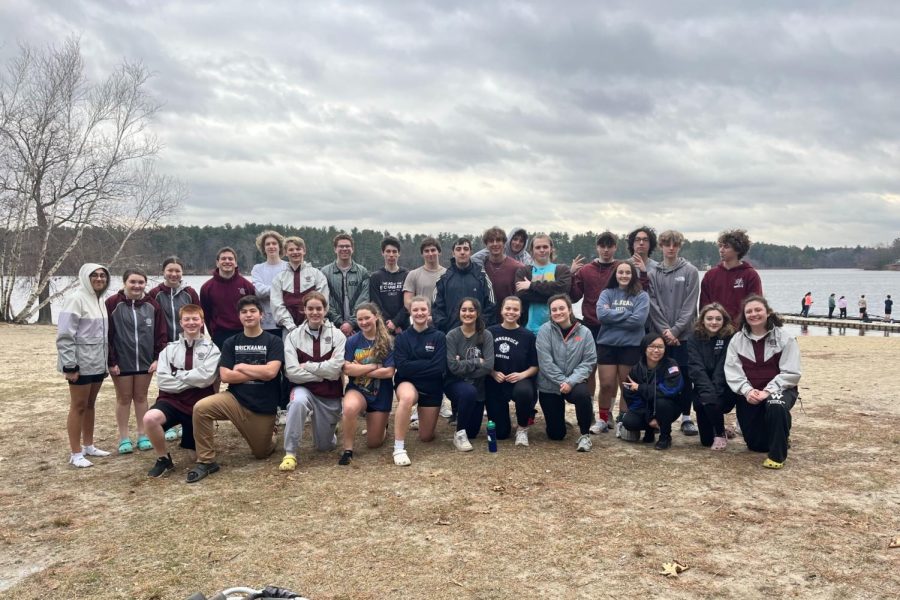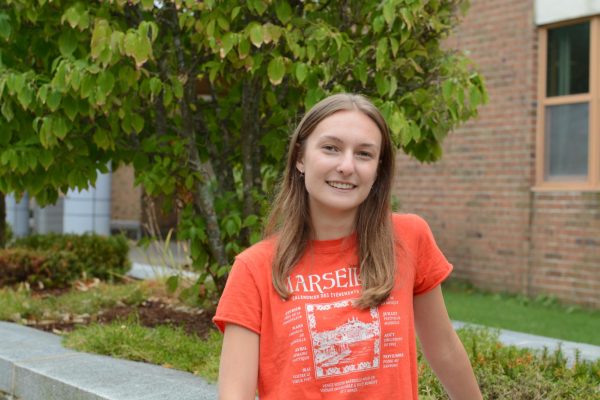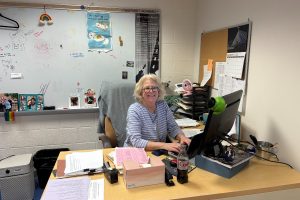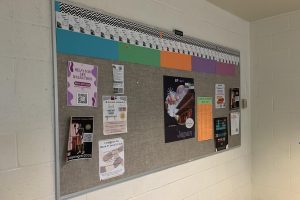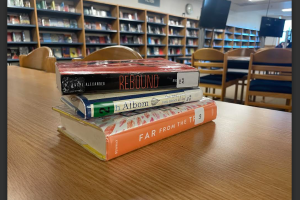Crew team excited to get back on the water
WA’s varsity crew club team is ready to get back on the water this spring in preparation for the Regional Championship on May 20.
March 24, 2023
Imagine you are on a boat surrounded by your team, synchronized with every stroke as you help propel the boat forward. As the boat cuts through the lake, sending gentle ripples of water, you realize how much you’ve missed the feeling of being outside. After months spent training indoors, each time your oar hits the natural resistance of the water feels like a luxury. For the WA Varsity Crew team, this feeling is something to look forward to.
Coming this spring, the team will be back for practices at Forge Pond in Westford, with a series of scrimmages and regattas in the lead up to the Regional Championships in Worcester on May 20. After a limited number of people during the winter, the team will be back to their usual of around 50. Their first scrimmage of the season will be at Lake Coventry, Connecticut on April 30.
The club team, which consists of surrounding schools like Groton-Dunstable and Lawrence Academy, plans to take on the waters this week after training indoors the whole winter. As part of their training, the team used the ergometer, a piece of machinery that measures the speed of their stroke, and competed in a number of local indoor events. However, the team is looking forward to getting back on the water once more.
“I think most people agree with me when I say that getting out in the water is such a great feeling. The erging, while it is a lot of work and is rewarding, it takes a lot out of you,” Boys’ senior captain Daniel Noonan said.
According to coach Cate Lacroix, practices during the spring are two hours long, with a short dynamic stretch before the team takes their boats out on the water. A main component of practices consists of drills designed to improve stroke technique, as well as rowing at varying speeds.
“Physically, we have a specific workout schedule to help get the team ready for races cardiovascularly and strength-wise,” Lacroix said. “We also do drills at the beginning of every practice to help improve form, which is integral to keeping the boat set on the water and to moving the boat efficiently with each stroke.”
According to Noonan, a major difference between winter and spring training is that the winter centers around reaching maximum speed on the ergometer and strength training in the gym. While this helps prepare the team for the spring, it can be stressful trying to get to the right time and takes away from other aspects of rowing.
“I’d say during the winter there’s a lot more pressure to get those times down compared to spring when [you need to] get together as a boat or just get your own personal form and technique down,” Noonan said. “It’s also more talking to the coach like ‘how can I get better at this?’.”
Another key difference between spring and other seasons is that the spring has 2,000 meter races with smaller boats, whereas the fall consists of up to 6,000 meter races.
When it comes to boating, rowers are assigned depending on their skill level, with the more advanced rowers receiving the faster boats, called A boats, during regattas. However, those with the B boats have proved to be just as good.
“We’ve had instances where the B boat works better than the A boat and they’ve beaten the A boat in races and it usually comes down to that teamwork aspect,” Noonan said. “Sometimes the A boat will pull better times on the erg [ergometer] but the B boat will work better together.”
Indeed, rowing is mainly a team based sport, so it requires cohesion between every stroker on the water. This is achieved not only through practices, but also fun events the team does outside of training in order to bond amongst each other.
“As a team, we like to get breakfast every Saturday or get pizza after practice on Wednesday because there is a breakfast place and a pizza place we can walk to from both the gym and the pond,” sophomore Charlotte Aeder said. “Sometimes we’ll to other things like Spags and hang out after practice.”
According to Girls’ senior captain Emerson Stair, team bonding between the varsity and novice teams is also something they strive for in order to ensure a welcoming environment for everyone. Something the senior captains encourage is a buddy system between the varsity and novice teams, in which varsity members are assigned a novice, offering guidance whenever they can.
“Last year, we had a mentor program where every novice had a varsity buddy. We have eighth and seventh graders on the team so we’ll be some of the first people in high school they know,” Aeder said. “We always say ‘hi’ to them in the halls. And then sometimes it’ll be our friends that joined and are novice as well so it’s a good way to get to know everybody.”
When it comes to their hopes for the spring, both the girls’ and boys’ captains are confident that they can place in Regionals in order to make it to Nationals.
“For the girls, we have a good boat with a couple strong rowers on the A boat that could possibly go to nationals, so our lineup was really strong from last fall,” Stair said. “A lot of us did winter [training], so there are a lot of good girls that definitely have the strength to get us to nationals. I think it’s all going to be about how well we can work together on the water.”

